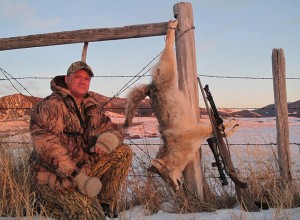By Miranda Collette
[youtube=http://www.youtube.com/watch?v=1CFGBuMXp3w&feature=youtu.be]
SALT LAKE CITY – At just 16 years old, it only took one shot for Troy Adams to kill his first coyote 75 yards away, on South Mountain in Kanosh Utah.
“I had just come over a ridge, and as I cleared it I jumped the coyote and he took off running; he stopped to look back at me, it was in the snow, and I put up my rifle and shot it.”
Adams has lived in Utah for 17 years, but moved to Montana 20 years ago to continue his passion for hunting. He has been calling predators specifically coyotes, for more than two decades now using an electronic caller, or more commonly referred to as an E-Caller.
When Utah decided to put up a $50 bounty for coyotes in July of 2012 it was all over the hunting discussion boards in Montana.
The Utah legislature passed the Mule Deer Protection Act in 2012, a bill which granted $500,000 a year to the Division of Wildlife Resources to begin an ongoing research project to increase Mule Deer populations.
“The idea was to provide incentives for people to remove coyotes from the field in order to help mule deer populations” said John Shivik, the mammal program coordinator for the Division of Wildlife Resources.
“What’s difficult about predators, their prey, and biology, is that it’s typically more complicated… it’s hard to put it into ‘just because you kill coyotes you will have more deer’ but we can do things to improve the odds and one is to get the right coyotes from the right places at the right time of year and that’s what this program is trying to do,” Shivik said.
Since the program began in 2012, researchers such as Shivik, have seen a lot of Utah hunters willing to participate.
From July 1, 2012 to June 30, 2013 the program reimbursed hunters a total of $380,950, the equivalent of 7,160 coyotes. Seven months into the current year, researchers have given out $158,750 (3,175 coyotes) in incentives. They estimate that they’ll give out the entire $500,000 by the end of June.
In addition to a $50 bounty, Utah is also offering to hire hunters to hunt coyotes in a specific area of Utah where researchers are most worried about fawn-doe ratios. These hunters who apply for what the program calls targeting contracts can make up to $10,000 for their months of work.
Since the start of the program targeting contracts have jumped from three to 13 with more on the horizon.
The Wildlife Resource buildings, where hunters can go to turn in their coyotes and receive reimbursement, are busy most often during the popular hunting months of December through February.
Wesley Alexander the regional supervisor at Utah Division of Wildlife Resources in Springville said, “I have appointments from five to seven every ten minutes, 20 plus people came in last night with coyotes…I had one guy who brought 47 coyotes at one time.”
Unfortunately a year and a half later it is difficult to tell how well the program is helping the mule deer population.
“It’s still a little too early to say, one of the great things about this program is that we have been gathering a lot of data and a lot of information. We will probably need to go about three years before we have a good feel,” Shivik said.
Alexander on the other hand could more confidently say that the program was helping, “There’s deer that are alive right now that wouldn’t have survived without this program,”
Montana Hunter Troy Adams said, “from a hunter’s perspective and cashing in on it, yeah it’s fun, but from an actual wildlife management perspective I don’t know that the data backs it up, I’m not sure that it does.”

Adams feared that many people outside of the state have used to the program to their advantage by pretending they were from Utah, since they do not have to prove where they actually shot the coyotes.Troy Adams with one of his many coyote catches right as the sun sets in Montana.
“You can basically rip the state off, somebody I am sure, is doing it. We try to be honest but I guarantee there are dishonest people who are cashing in on this,” Adams said.
Only time will tell, to see if this program is truly successful in helping rebound mule deer numbers. As of right now researches can only keep collecting data and crossing locations and numbers to hopefully see some benefit in the future.
Meanwhile people like Adams can continue to do what they love and if you’re lucky enough to live in Utah, you can get paid for it.Troy Adams with one of his many coyote catches right as the sun sets in Montana.
Video By Aaron Adams




